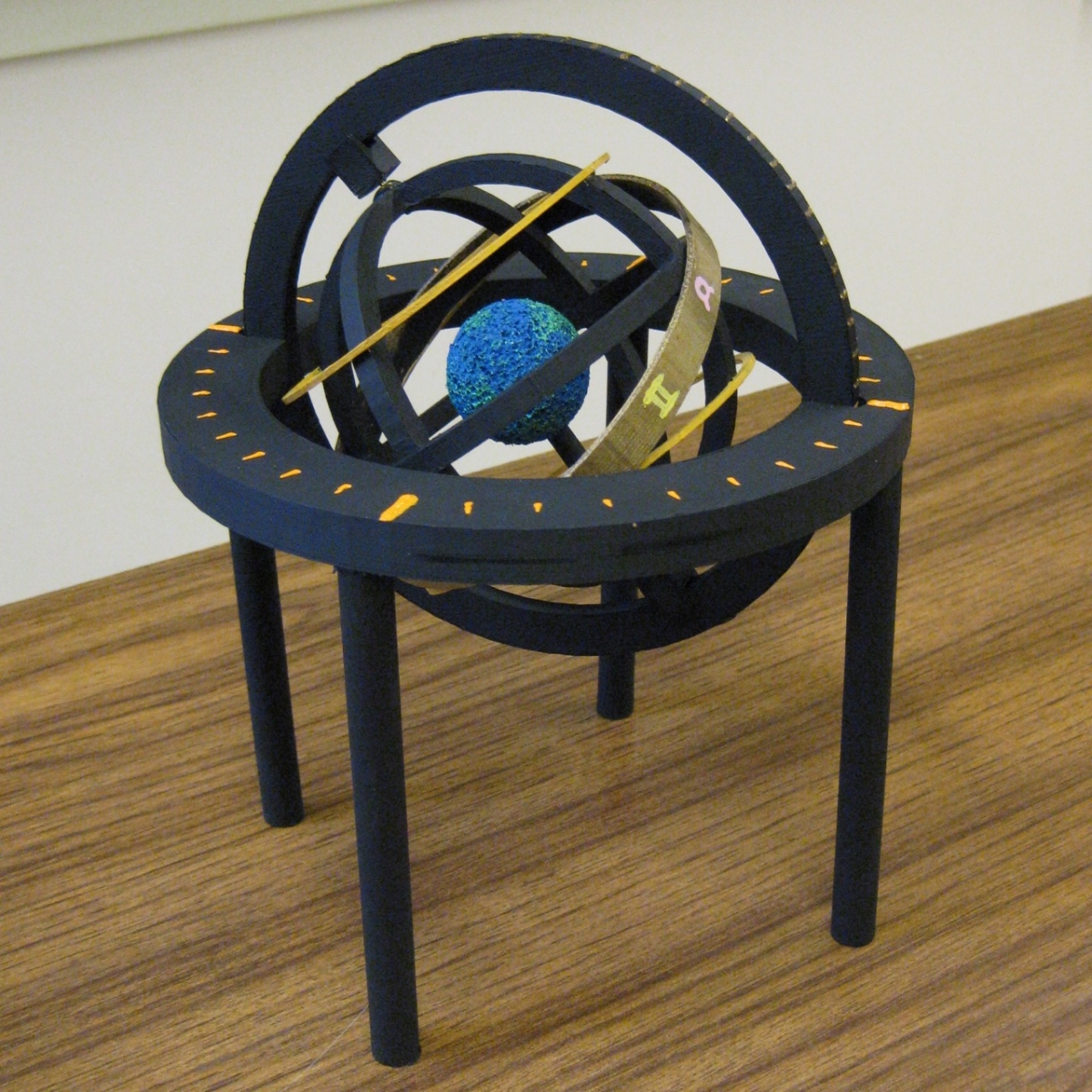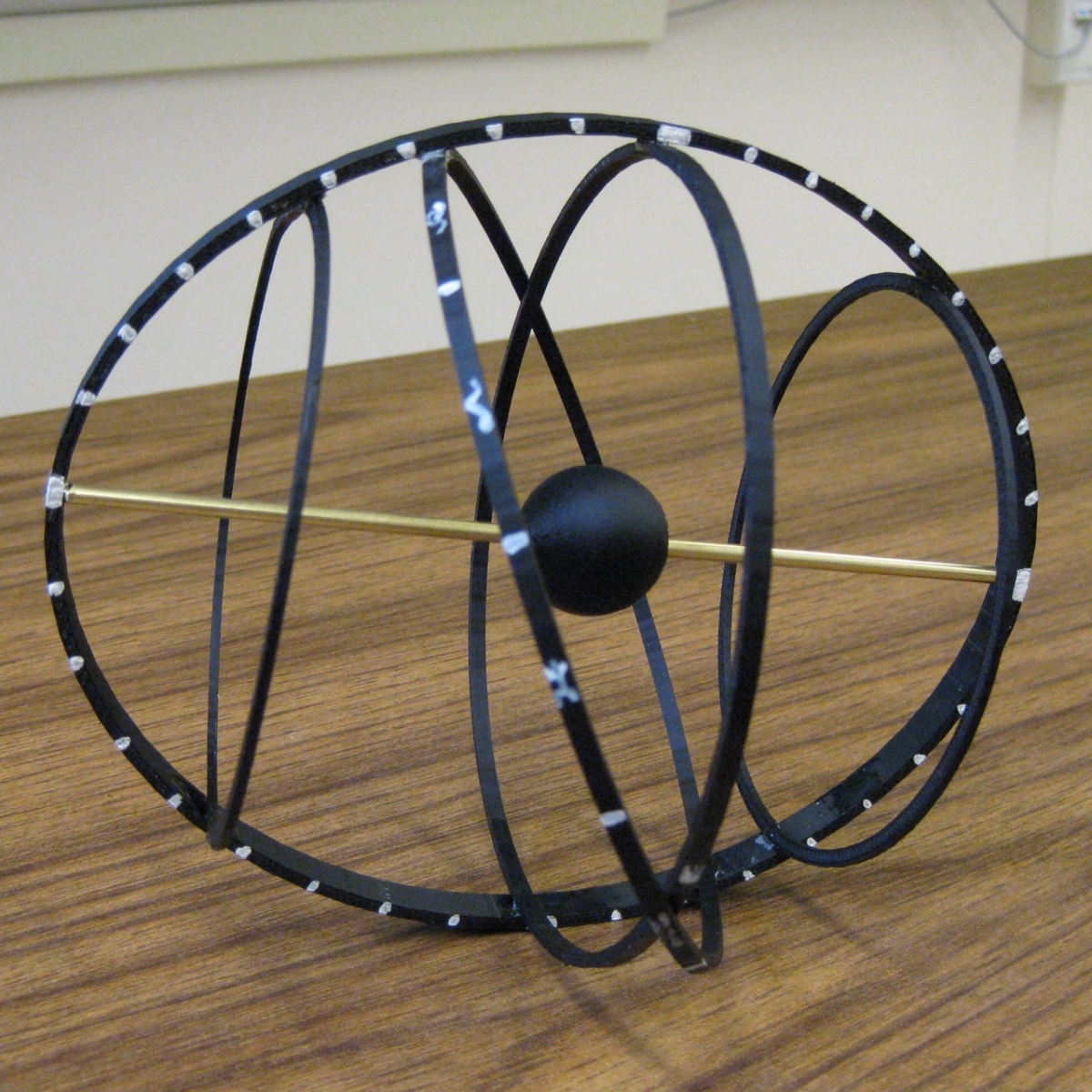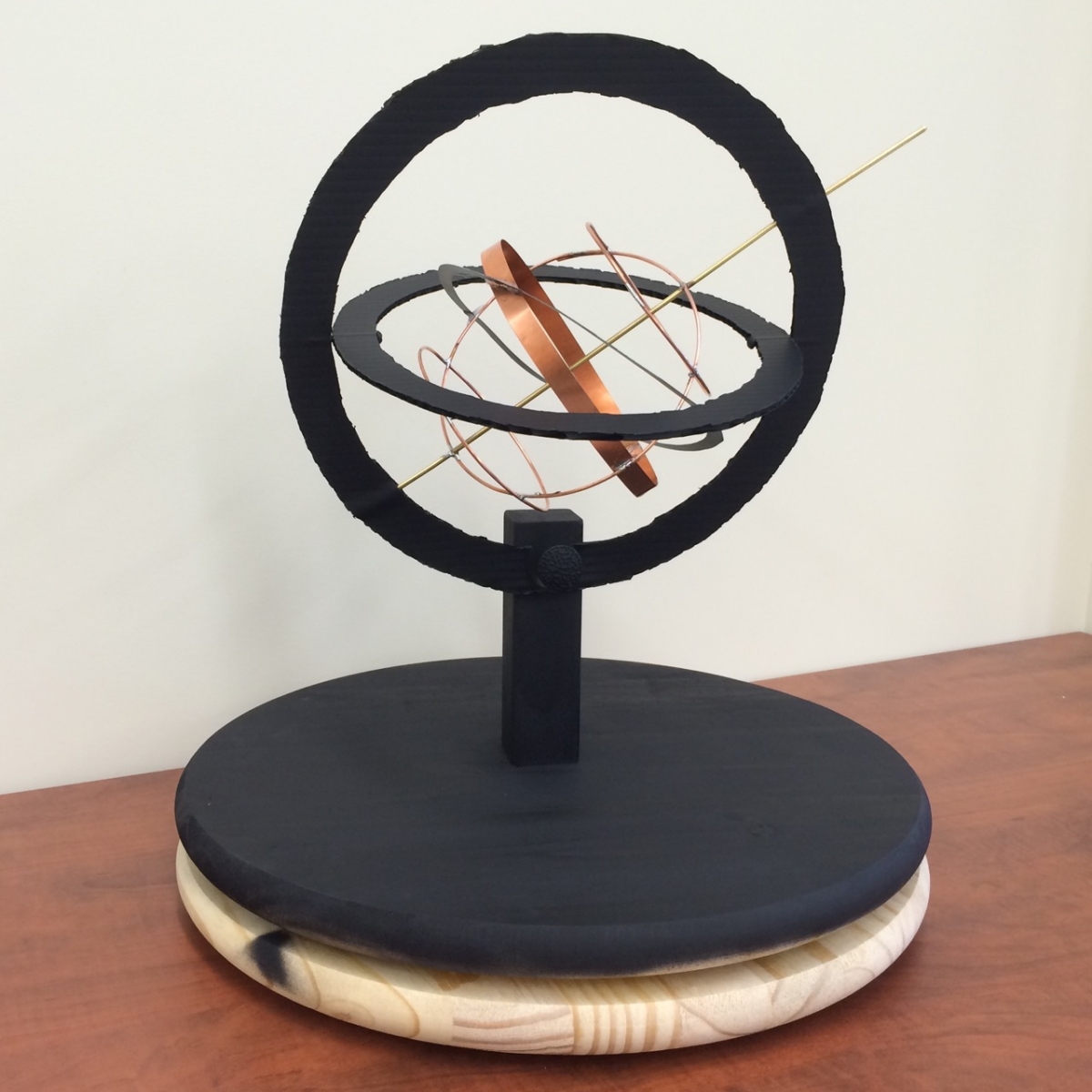- About MAA
- Membership
- MAA Publications
- Periodicals
- Blogs
- MAA Book Series
- MAA Press (an imprint of the AMS)
- MAA Notes
- MAA Reviews
- Mathematical Communication
- Information for Libraries
- Author Resources
- Advertise with MAA
- Meetings
- Competitions
- Programs
- Communities
- MAA Sections
- SIGMAA
- MAA Connect
- Students
- MAA Awards
- Awards Booklets
- Writing Awards
- Teaching Awards
- Service Awards
- Research Awards
- Lecture Awards
- Putnam Competition Individual and Team Winners
- D. E. Shaw Group AMC 8 Awards & Certificates
- Maryam Mirzakhani AMC 10 A Awards & Certificates
- Two Sigma AMC 10 B Awards & Certificates
- Jane Street AMC 12 A Awards & Certificates
- Akamai AMC 12 B Awards & Certificates
- High School Teachers
- News
You are here
Bridging the Gap Between Theory and Practice: Astronomical Instruments - Three Armillary Spheres
Three Armillary Spheres
An armillary sphere is essentially a model of the sky, which is constructed by a number of rings on the same sphere. The system has the earth as its center, and the rings represent astronomically important features such as the celestial equator, the ecliptic, and the tropics. The armillary sphere is an ancient astronomical instrument that was used in both ancient Greece and ancient China, and by later cultures.
For more information about the armillary sphere, the Starry Messenger Project, developed by the Whipple Museum of the History of Science and the Department of History and Philosophy of Science at Cambridge University, has a website dedicated to the instrument at http://www.hps.cam.ac.uk/starry/armillary.html. In addition, Convergence has an image of a beautiful Italian armillary sphere from 1550 CE at http://www.maa.org/publications/periodicals/convergence/mathematical-treasures-italian-armillary-sphere.
A total of three groups undertook to design an armillary sphere, two in Fall 2010 and one in Fall 2014.
One of the groups that undertook to design an armillary sphere in Fall 2010 produced the most successful instrument of that course. Both members of the group worked hard and were enthusiastic throughout. Their armillary sphere was simplified in that it did not possess all of the items usually found on such an instrument (such as the arctic circles), but it had the main features, including the equator, the tropics, and the ecliptic.
The parts of the armillary sphere were movable, though not sufficiently so to be used for serious purposes. As such, the armillary sphere served more of an instructional purpose. The instrument was constructed mainly of parts created by the 3D printer. All of the rings and legs were printed on the 3D printer. The heavenly sphere of the instrument was attached to the main body of the instrument by iron pins to allow for the main body to rotate.

Figure 1. Student-built armillary sphere from Fall 2010 Ancient Mathematical Astronomy class (photograph by Toke Knudsen)
The armillary sphere is shown in the photo above. It is visually pleasing and could easily serve in an instructional capacity.
Another group undertook to design an armillary sphere in Fall 2010. In this case, the rings were made by the 3D printer and an iron stick was used as the central axis.

Figure 2. Another student-built armillary sphere from Fall 2010 Ancient Mathematical Astronomy class (photograph by Toke Knudsen)
The second armillary sphere from the Fall 2010 class is shown in the above photo. As can be clearly seen, the instrument did not ultimately fit together as was intended, and it was never attached to a body that would allow for it to be displayed properly or used.
In Fall 2014, one group decided to design an armillary sphere. Based on my experience from Fall 2010, I had no objections to this choice.

Figure 3. Student-built armillary sphere from Fall 2014 Ancient Mathematical Astronomy class (photograph by Toke Knudsen)
The above photo shows the armillary sphere from Fall 2014. The parts for this armillary sphere were made without using the 3D printer. The base consists of two circular wooden pieces, allowing for the instrument to rotate. The rings representing the celestial sphere are made from plastic, while the body of the instrument is made of copper rings constructed by Anderson. The instrument has the equator, the tropics, and the ecliptic, as was the case with the armillary spheres from Fall 2010.
While visually pleasing and able to serve as an instructional tool, the instrument was less successful than the best one from Fall 2010. For example, the main body of the instrument is too heavy for the plastic rings, for which reason the instrument droops slightly. The angles between the equator and the tropics are also not correct. These are somewhat minor things, however, that could have been corrected had there been more time available.
Toke Knudsen (State University of New York at Oneonta), "Bridging the Gap Between Theory and Practice: Astronomical Instruments - Three Armillary Spheres," Convergence (May 2015)




